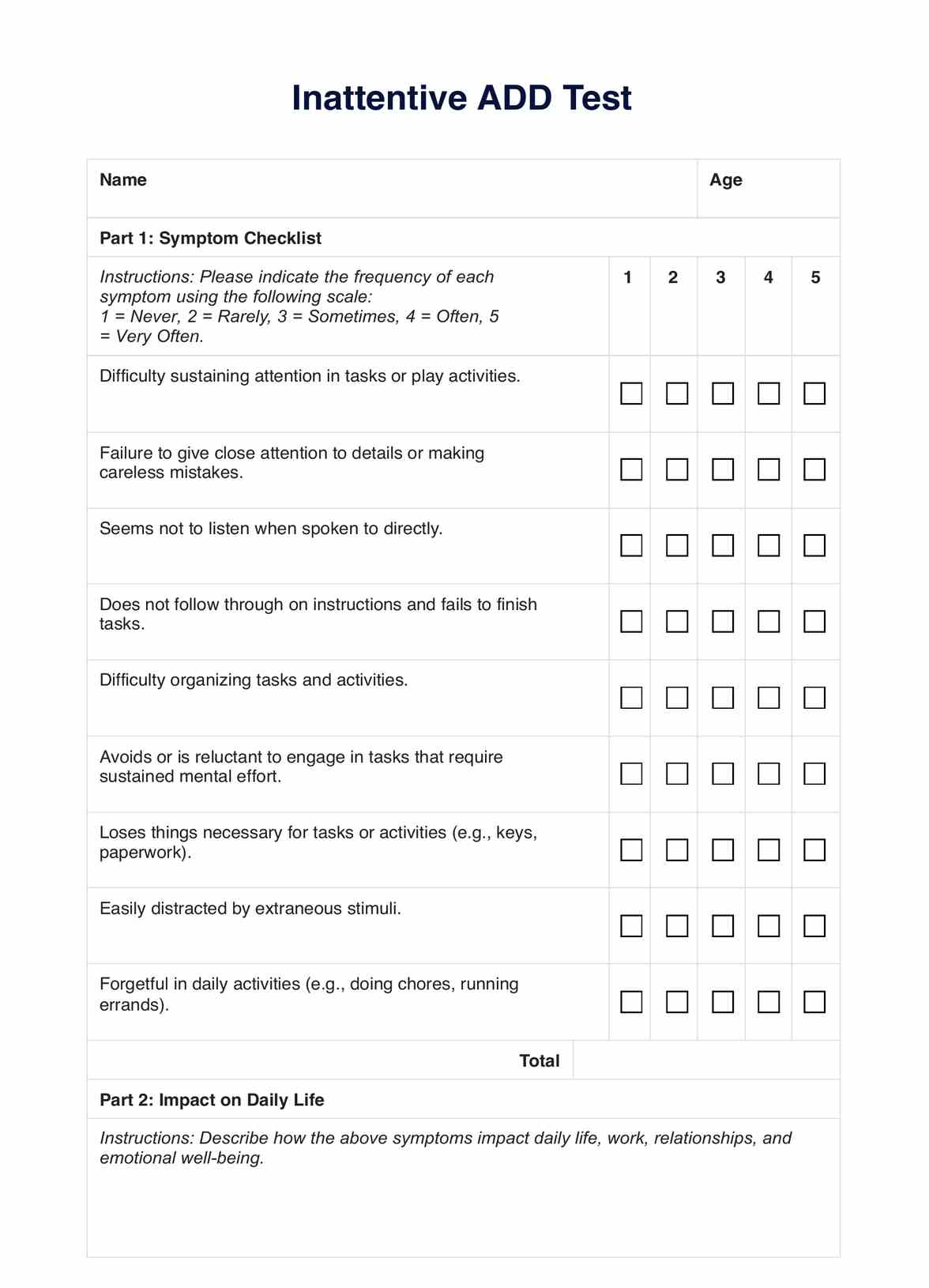Testing and diagnosing ADHD, particularly inattentive ADD, typically involves a combination of psychological evaluations, symptom checklists, like the Inattentive ADHD Test, and discussions about the individual's medical, academic, and behavioral history.

Inattentive ADD Test
Discover our comprehensive Inattentive ADD Test Template, designed to assist in diagnosing and managing ADHD effectively. Download the free sample now.
Use Template
Inattentive ADD Test Template
Commonly asked questions
Symptoms of inattentive ADD include difficulty sustaining attention, frequent careless mistakes, poor organizational skills, forgetfulness in daily activities, and being easily distracted.
Inattentive ADD is a subtype of ADHD characterized by significant difficulties in maintaining attention and focus, often without the hyperactivity commonly associated with ADHD.
EHR and practice management software
Get started for free
*No credit card required
Free
$0/usd
Unlimited clients
Telehealth
1GB of storage
Client portal text
Automated billing and online payments











